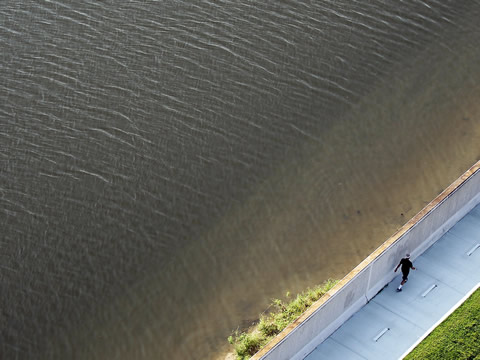When New Orleans began to expand into the cypress swamps near Lake Pontchartrain in the early 20th century, the city used mechanical pumps to reclaim the soggy terrain for urban development. But the removal of the water caused the city – and especially the so-called “back-of-town” neighbourhoods that would be so hard hit during Hurricane Katrina in 2005 – to begin sinking. State and federal agencies built levees around the city, and New Orleans residents just came to accept routine flooding from sewer backups as a fact of life.
Eighteen months after the Katrina disaster, Jane Wolff, director of the master of landscape architecture program in the John H. Daniels Faculty of Architecture, Landscape, and Design, started working with community groups in the devastated Louisiana city on what, she realized, was a completely neglected aspect of the massive urban reconstruction that was underway: water management. “When I started, the conversation was all about buildings,” says Prof. Wolff, who has previously worked on water management in the Netherlands and California. “There was no public discussion of the city’s future as a landscape problem.”
Indeed, in the aftermath of the disaster, New Orleans officials appeared to be ignoring the water issue for political reasons. The Urban Land Institute had released a controversial map indicating which devastated neighbourhoods should not be rebuilt because they were too exposed to flooding risk. But the affected communities, Wolff says, were predominantly low-income and African-American, and the recommendation met with stiff resistance.
In response, Wolff and Prof. Elise Shelley joined Prof. Derek Hoeferlin of Washington University’s School of Architecture to establish “Gutter to Gulf,” a research and teaching project for master’s students. The initiative is meant to generate landscape-based solutions to water management in New Orleans as an alternative to the traditional infrastructure (pumping stations, levees, etc.) that failed the city during the catastrophe. The students, Shelley says, are under strict instructions to generate ideas that are not only technically feasible, but also politically, socially and economically realistic – and which could compete with formal proposals that will eventually be submitted to the city by agencies such as the Army Corps of Engineers.
One proposal the students came up with is to plant groves of bald cypress trees on derelict lands. The species, native to the area, has tremendous absorptive capacity and the wood is desirable as a building material. The students are also advocating “hydrophilic agriculture” – using rice paddies, for example, as a means of soaking up surplus water, especially in the rainy season. Similarly, they have suggested planting water-absorbing native species over the top of the buried culverts that run down the medians on many of the city’s broader boulevards.
Wolff and Shelley point out that their students’ work has implications that extend well beyond the devastated precincts of New Orleans, because climate change and rising sea levels are forcing all coastal cities to change the way they deal with water. “It’s only going to get worse,” says Wolff. “That means water will become an increasingly intense force in cities.”






